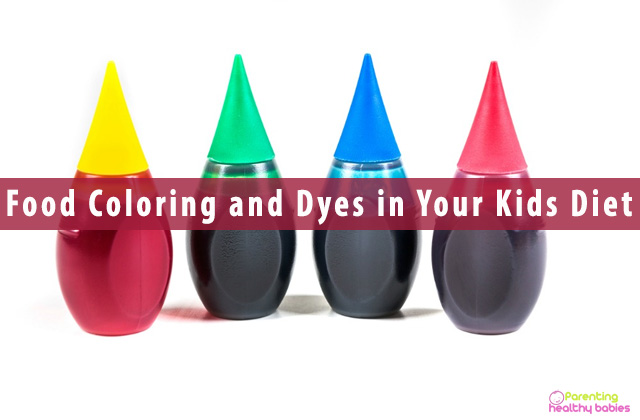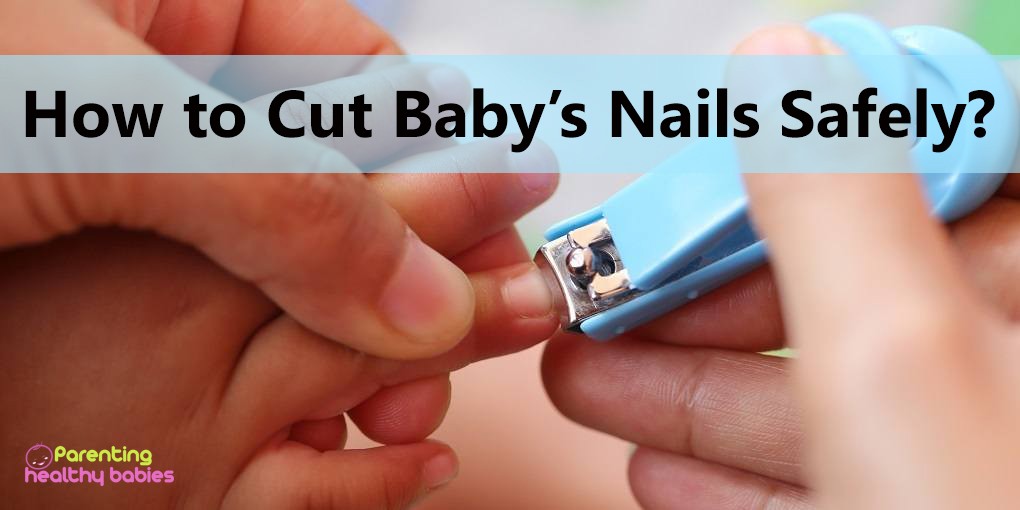Although the FDA approves certain natural food coloring in children’s foods there are some other scientific bodies which claim otherwise. Studies have shown that artificial coloring (often mixed with the natural ones) have some adverse side-effects on the kids’ behavior.
Your child might become hyperactive. He/she might remain very irritable. They will be unable to focus or concentrate on anything for a long time. They will suffer from serious attention deficit. These are the basic few dangers that food coloring possess. (Kanarek, 2011)
However, there are other fields of study which claims that most of the colorings are safe to be consumed by kids. Now before we evaluate the benefits and the risks of food coloring in kids’ food let us first educate ourselves about the type of food coloring which are present in the foods.
Food Coloring and Dyes: Things Parents Need to Know
It is misconception amongst many parents that food coloring is only present in the sugary cereals and candies. Whilst it is true that the food products like Trix and Lucky Charm contain heavy coloring, there are other food products also which are artificially colored.
- Blue 1 is a very bright colored dye which is used in many food items like syrups, jellies, and dairy products consumed by kids.
- Blue 2, is another blue dye which you will find in confectionaries, baked foods for kids, and also canned cherries.
- Green 3 is a kind of sea-green colored dye which is used in kids’ foods like ice-creams, sherbets, puddings, and other food items.
- Red 40 is an orange colored dye which is found in many condiments consumed by your kid. Other than that this dye is also present in food items like puddings, and dairy products.
- Red 3 is a deep-red food dye which is used in canned cherries, salads, and many packaged snacks.
- Yellow 5 is another Lemon-Colored dye which is commonly found in custards, beverages, and ice-creams. They are also sometimes found in cereals.
- Yellow 6 is an orange-colored dye which can be found in cereals, snacks, ice creams, and dessert powders. (Arnold, 2012)
Apart from these artificial color dyes there are many natural color sources as well which are used in children’s foods. These natural food colors include beet juice, the caramel color, the extract from annatto, and saffron. These natural colors are much less harmful when compared to the artificial ones.
Reasons for Using Food Coloring
The reasons behind using food coloring are more commercial than it is concerned with health and safety of the consumer. Food coloring is used for bringing uniformity in color. This is done in order to make the food item appear more attractive. It adds to the appeal of the particular food item. (Arnold, 2012)
It is a common consumer psychology not to purchase any food which does not appear brightly colored. That is the reason why food producers and marketers deliberately use some food coloring in order to lure the consumers.
However, in order to gain that uniformity of colors the companies can easily use natural food coloring sources which are obtained organically. But according to the report published by CSPI the food coloring used in most food items of the United States is from artificial sources. This triggers a great deal of risk to the health of your child.
Heavy food coloring is used in substances like M&M, Skittles, the strawberry syrup used in McDonald’s and many other food products all across the United States. So, you must make wise choices before you allow your child to consume such things.
Health Impact of Food Coloring
Although according to the FDA the addition of food coloring in children’s food is safe but studies have found out that there serious health impact of these items on children’s mental health.
Children below the age of 3 years suffer from hyperactivity and lack of concentration when they consume foods containing artificial colors. They tend to be more restless when compared to children having foods which contain fewer amounts of artificial colors. (Kanarek, 2011)
Also at the same time children between 8 and 9 years of age suffer from the lack of concentration and focus when they consume foods containing artificial colors. They suffer from hyper-activity and serious attention deficit. This harms their academics. It also affects their other activities as well. In some cases children consuming more artificially colored foods are prone to show addictive behavior in the future. (Arnold, 2012)
So, it can be safely concluded that artificial coloring in food items for children do not offer any kind of health benefits. Rather they impact negatively to their behavioral development of your child.
Tips for the Parents
Food coloring has the tendency of impacting your children’s behavior. It also impacts the overall attention level of your children. The following are some of the tips by which you can prevent your child from consuming food coloring:
- Limit the number of processed foods he/she consumes. Focus mainly on whole foods which are organically obtained.
- Whilst you are buying some processed food items then read the label carefully for the artificial coloring used in the item. This will give you an idea about the amount of artificial coloring your child is actually consuming.
- Avoid giving him/her artificially flavored milk or juices. Natural sources are often safe for consumption.
- If you are making foods at home avoid substances which are artificially colored. Substances like AmeriColor or Ateco food coloring should be avoided. (Stevens, 2015)
- There are certain food items which are heavily colored with artificial food coloring. Avoid giving your children such food items. Packaged foods in the form of Kellogg’s Pop-Tarts Frosted Double Berry toaster pastries have high amount of artificial colors in them. Avoid offering your child such food items. (Stevens, 2015)
Conclusion
Recently many artificially colored food items are being replaced by natural colors. Read the labels of the food items you buy for your child. Seek for any information regarding the artificial coloring.
Avoid buying stuffs which are artificially colored. Try and change your child’s food habit so that he/she is not in any sort of danger.
Reference
https://onlinelibrary.wiley.com/doi/full/10.1111/j.1753-4887.2011.00385.x
https://link.springer.com/article/10.1007/s13311-012-0133-x













